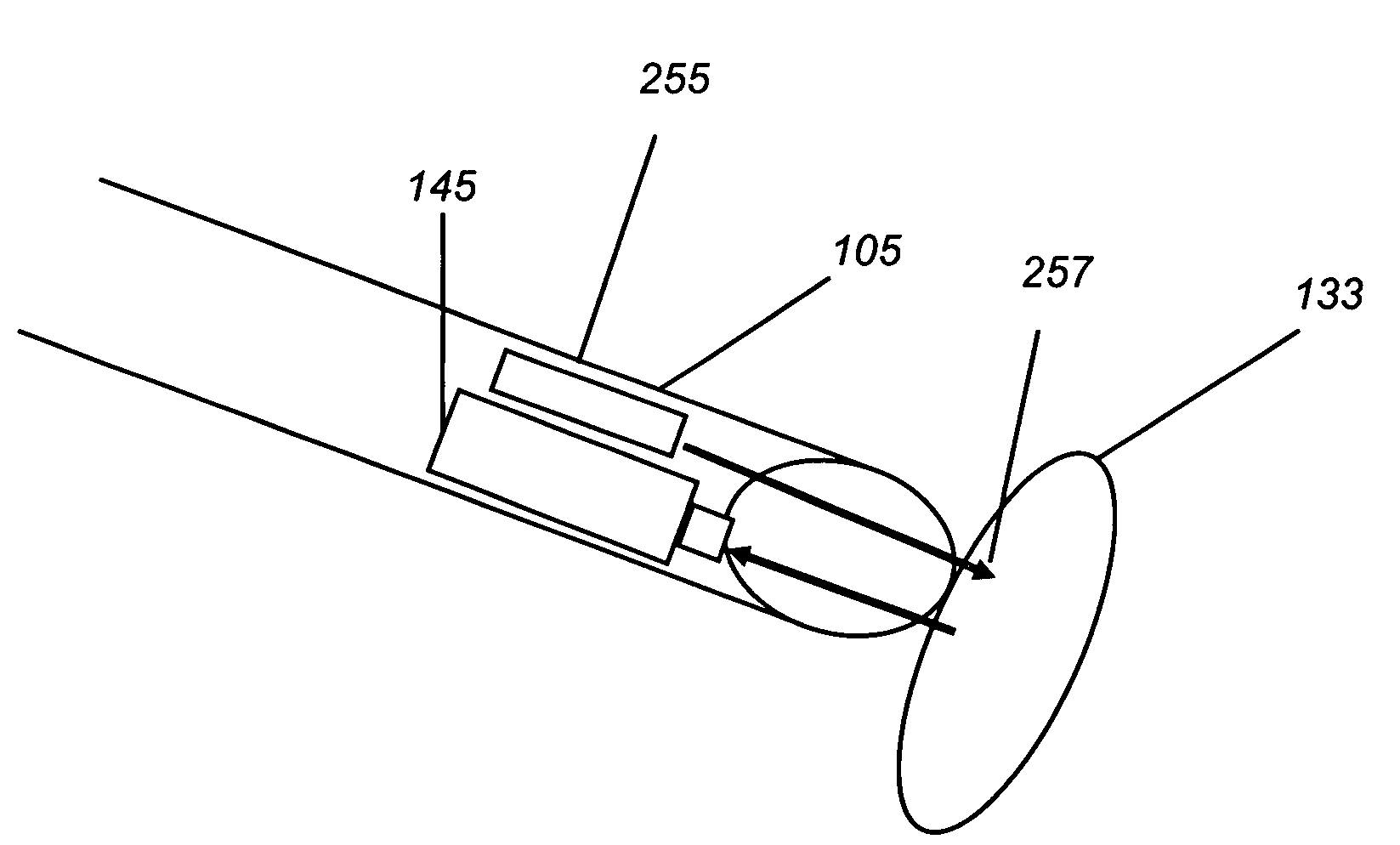Medical imaging lens system, and method with high-efficiency light collection and collinear illumination
- Summary
- Abstract
- Description
- Claims
- Application Information
AI Technical Summary
Benefits of technology
Problems solved by technology
Method used
Image
Examples
example 1
Improved Light Collection Using the Present Invention
[0088]One method to improve imaging efficiency is to improve the light collection efficiency—that is, to increase the fraction of target signal that reaches a detector.
[0089]In order to evaluate the impact of design considerations, we modeled the expected improvement in the efficiency of light collection achieved by altering various aspects of a collection lens design, and we then verified our model data using experiments. This model incorporated known features of light generation from tissue, the transmission characteristics of certain optical elements, and the like, and each aspect of the model was tested in the laboratory to confirm agreement of the predictions to those of measured results.
[0090]For this modeling, we assume that the lens focuses at 1 m with a field of view of 10-20 cm, and that the light source is a point of light, infinitesimally small, at the center of the imaging field. The highest theoretical limit for ligh...
example 2
[0095]In order to test the validity of the data generated using the model shown in Example 1, we constructed a working system for experimental tests, under U.S. Government support. This system was used to image dye in animal, as shown in FIG. 4. In FIG. 4A, mouse 520 can be seen from room light, while dye 531 contained inside mouse 520 is seen. In FIG. 4B, dye is seen at sites 543 and 546.
[0096]This demonstrates that the system is operative and functional in its intended use, namely room light imaging of dyes within living animals.
[0097]This type of lens can be used in targeted surgery, as is disclosed in WO 2000 / 68665, incorporated by reference in full into this disclosure. One example is mounting the camera over an auxiliary dissection for breast cancer to look at sentinel lymph nodes. In this case, the dye could be injected into the skin, and the fluorescence imaged with the catadioptric lens and illumination system. The detection in this case could be from pulsed l...
PUM
 Login to View More
Login to View More Abstract
Description
Claims
Application Information
 Login to View More
Login to View More - Generate Ideas
- Intellectual Property
- Life Sciences
- Materials
- Tech Scout
- Unparalleled Data Quality
- Higher Quality Content
- 60% Fewer Hallucinations
Browse by: Latest US Patents, China's latest patents, Technical Efficacy Thesaurus, Application Domain, Technology Topic, Popular Technical Reports.
© 2025 PatSnap. All rights reserved.Legal|Privacy policy|Modern Slavery Act Transparency Statement|Sitemap|About US| Contact US: help@patsnap.com



